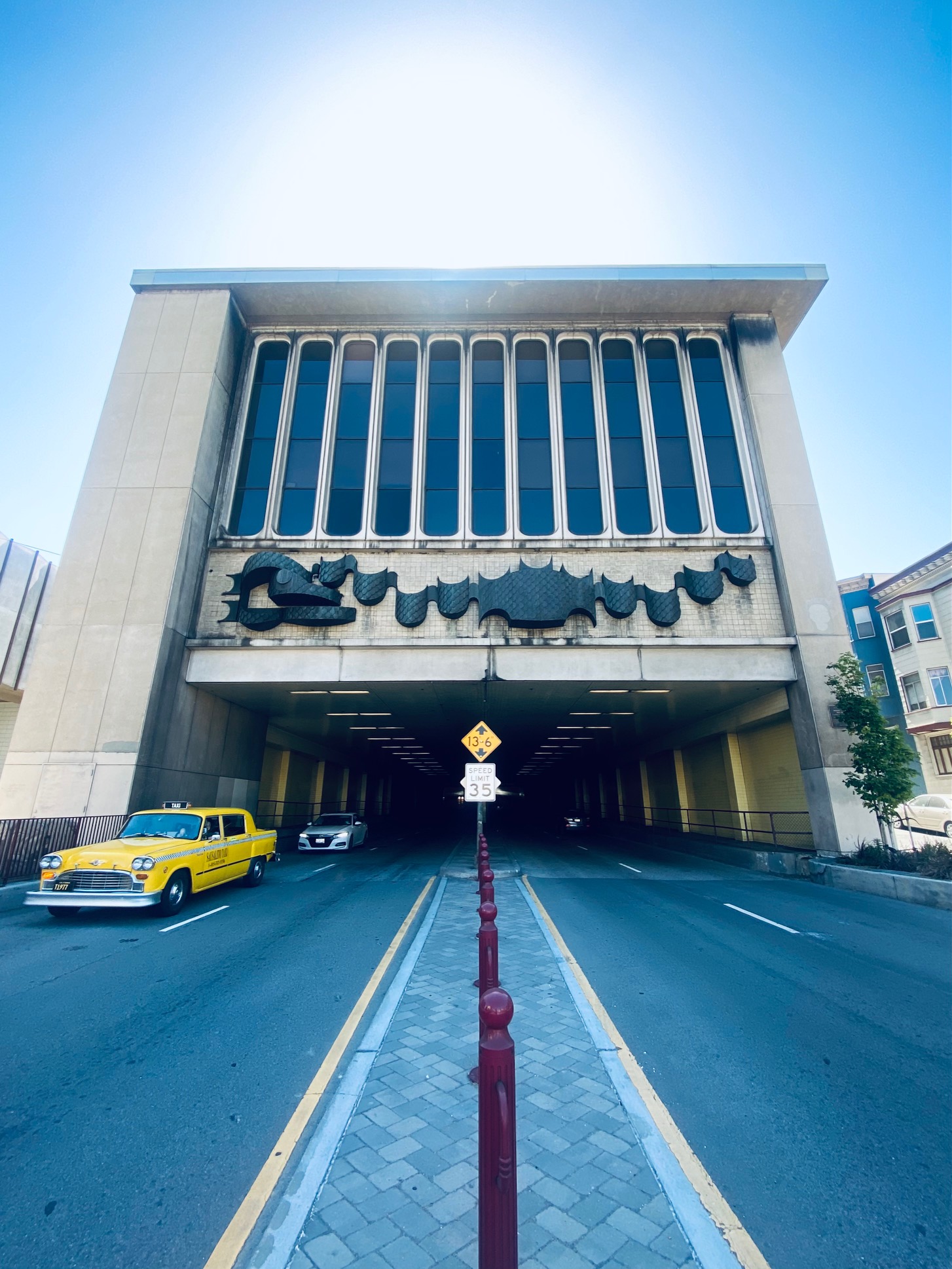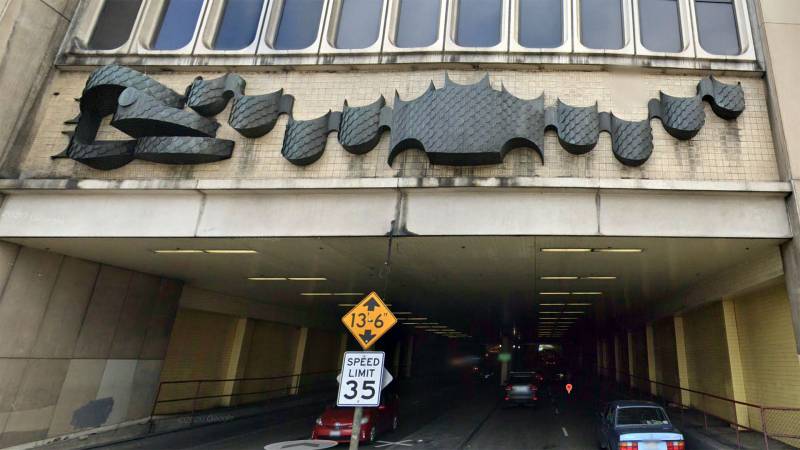Stretching 56 feet across the Chinatown side of the Broadway Tunnel is a bronze and brass sculpture of a dragon, silently towering over the cars rumbling below. It’s been poised there — a stoic sort of guardian — since 1970. Bay Curious listener Sandi Sewell asked us to find out more about how it got there.
The dragon was designed by San Francisco-born artist Patti Bowler, and lovingly constructed by Santa Rosa metal worker Wade Lux. Sandi, our question asker, grew up with the Lux family and recently found out about the commission from some old photos. She was charmed to learn her old friend had a hand in making such a prestigious piece of art.
The San Francisco Arts Commission says the imposing piece was one of the first public artworks to result from the city’s Art Enrichment Ordinance. The 1969 ordinance required every civic construction project in the city to dedicate two per cent of its budget to a piece of public art.
When the city approved the Chinatown Public Health Center to sit above the Broadway tunnel, architect Clarence Mayhew nominated Bowler to design the accompanying $27,500 artwork. (Mayhew’s judgment in such matters was trusted, thanks in part to his seat on the board of the SFMOMA.) The piece would be titled simply, “Dragon Relief.”

At that time, Bowler was a fashionable and forward-thinking mixed media artist and designer, whose most talked about pieces were created using a new kind of paint she had invented. Bowler manipulated her special combination of polyester resin and dry pigments using brushes and bamboo. The end results were three-dimensional, multi-colored and abstract works that were on regular display in galleries around the Bay Area.

